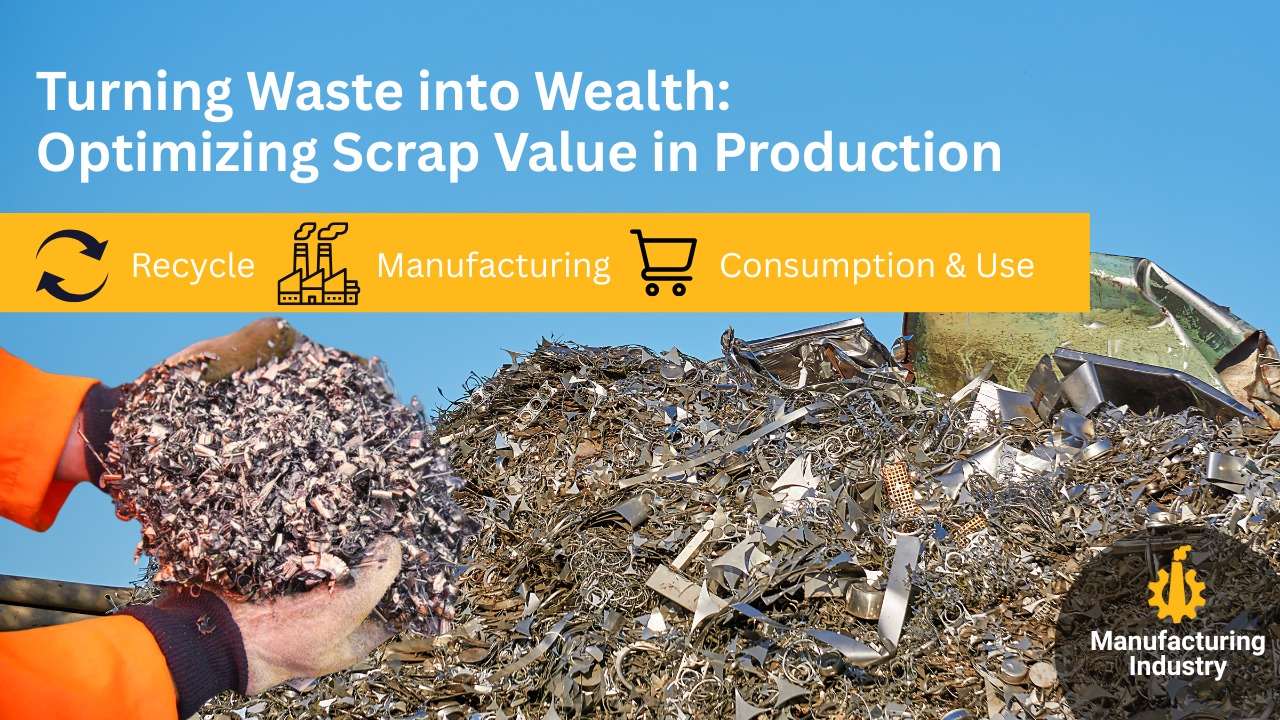
Manufacturing units generate a significant amount of scrap material as a byproduct of their production processes. Whether it’s metal, plastic, wood, or other industrial waste, proper handling of scrap can turn it into a valuable asset rather than an operational burden. Maximizing the value of scrap is crucial for cost reduction, environmental sustainability, and improved profitability. This article explores various strategies that manufacturing units can implement to optimize their scrap management and maximize its value.
1. Implement an Efficient Scrap Segregation System
One of the key factors in maximizing the value of scrap is proper segregation. Mixing different types of waste can reduce their resale value and make recycling more difficult. Implementing a structured segregation system ensures that valuable materials such as metals, plastics, and electronic components remain uncontaminated. Some best practices include:
- Using separate bins for different types of scrap.
- Training employees to identify and sort waste properly.
- Labeling collection areas clearly to avoid mix-ups.
2. Invest in Advanced Recycling and Processing Technologies
Modern recycling technologies can significantly enhance the value of scrap by refining raw waste into reusable materials. Investing in advanced machinery such as shredders, compactors, and balers helps reduce waste volume and improves the efficiency of recycling processes. For example:
- Metal compactors can reduce the size of scrap, making transportation and storage more efficient.
- Plastic shredders break down large plastic components into smaller, more manageable pieces for recycling.
- Automated sorting systems use AI and sensors to separate valuable materials more accurately.
3. Partner with Reputable Scrap Dealers and Recycling Companies
Collaborating with reliable scrap dealers and recycling firms ensures that manufacturing units get the best value for their waste materials. Choosing the right partners can lead to higher payouts and streamlined collection processes. When selecting a scrap dealer, consider:
- Their experience and reputation in the industry.
- Pricing policies and payment terms.
- Their compliance with environmental and regulatory standards.
4. Explore Upcycling Opportunities
Instead of merely selling scrap to recycling firms, manufacturing units can explore upcycling opportunities to create new products from waste materials. Upcycling involves creatively repurposing waste into useful or higher-value items. Some examples include:
- Using metal scrap to create machine components or tools.
- Repurposing wooden waste into furniture or decorative items.
- Transforming plastic waste into consumer goods or construction materials.
5. Optimize Production Processes to Minimize the Generation of Scrap
However, the most effective and possible way to thwart scrap from being completely written off is to eliminate it at the source. Therefore, manufacturing can use one of the principles of lean manufacturing, that is, to put up a proof system of wasting less and using materials to their maximum. Methods may include:
- Bolstering the cutting of waste.
- Enhancing control of quality to reduce defects that produce waste.
6. Educate and Train Employees on Waste Handling
Employee awareness and involvement come almost first when we talk about good scrap management. A series of informative sessions from workshops could radically improve the recovery rates for scraps. Employees should be trained on:
- Hygienic and appropriate waste separation.
- Safe handling and storage of recyclables.
- Environmental benefits of efficient scrap management.
7. Use Data Analytics to Control Scrap
The application of data analytics enables manufacturing units to monitor scrap data behavior for sustained improvement. By utilizing data on scrap, companies can:
- Barter high-costing scraps that could be resold or reused.
- Make informed choices for better process and recycle technology utilizing existing data.
8. Devote more to Circular Economy
The concept of a circular economy swirls around an idea of full resource utilization and limited waste through reusing, restoration, and recycling. Applying such an approach in a manufacturing unit shall:
- Decrease dependency on raw material.
- Lower production costs thanks to utilizing used material.
- Enhance sustainability and comply with environmental regulations.
Staff Writer
Staff Writer at Manufacturing Industry
Conclusion
A holistic strategic approach opens the door to capturing the intrinsic value of scrap in manufacturing units. This includes appropriate segregation, investment in recycling technologies, trading with scrap dealers, and upcycling. Optimizing production processes, training the employees, incorporating data analytics, and circular economy practices can add value to scrap. Effectively managing scrap can make a huge difference. It’s a win-win strategy for both profitable operations and environmental sustainability.